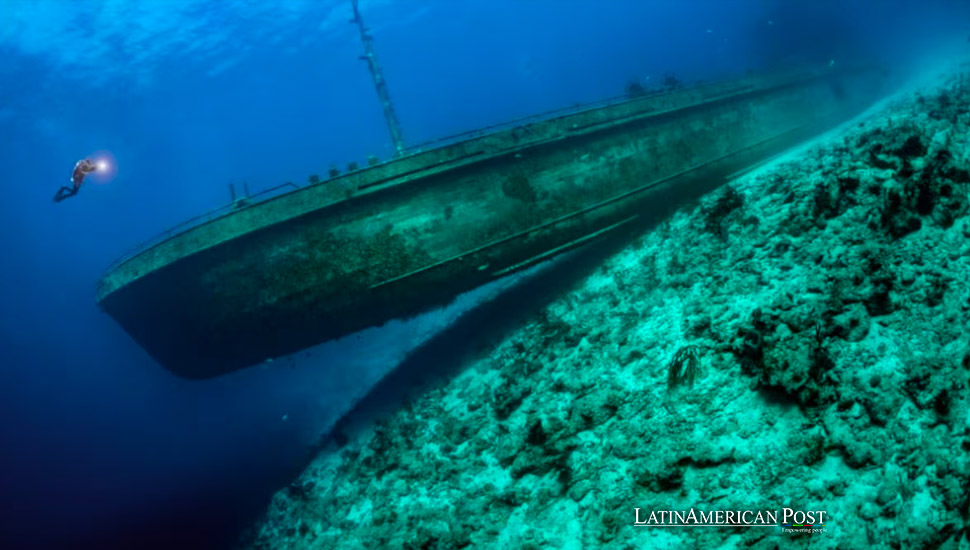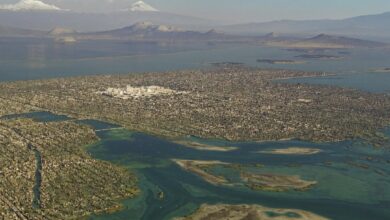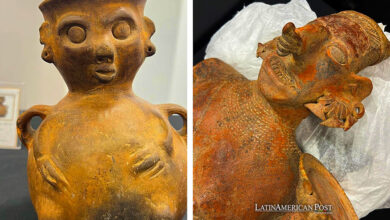Shipwreck of a Spanish Galleon in the Bahamas Fueled Rise of Caribbean Pirates

A new maritime study reveals how the 1656 wreck of the Spanish galleon Nuestra Señora de las Maravillas in the Bahamas catalyzed the rise of notorious pirates in the Caribbean. This analysis delves into the shipwreck’s historical significance and its lasting impact on the development of Nassau as a pirate stronghold.
The Maravillas: A Catastrophic Loss with Far-Reaching Consequences
The story of the Spanish galleon Nuestra Señora de las Maravillas is one of tragedy, financial ruin, and unintended consequences that would ripple through history. The Maravillas, a grand two-deck ship with 36 bronze cannons, symbolized Spanish maritime power in the 17th century. On its final voyage, the vessel was laden with a vast treasure from the Americas, bound for Seville. However, disaster struck when the Maravillas collided with another ship, leading to a catastrophic series of events that ended with the boat striking a coral reef and sinking to the ocean floor.
Of the approximately 650 people on board, only 45 survived, leaving behind a legacy of personal and financial loss. The Spanish government, already struggling to maintain its dominance in the New World, suffered a severe economic blow with the loss of the Maravillas and its treasure. Over the centuries, various expeditions, some sanctioned by Spain, have attempted to recover the lost riches, salvaging a significant portion of the treasure, including the cannons and an estimated 2.9 million pesos worth of silver pieces.
However, according to Carl Allen, president of Allen Exploration (AllenX), the company responsible for the recent study, the true legacy of the Maravillas goes beyond its lost treasure. The shipwreck, he argues, was a pivotal event that inadvertently set the stage for the rise of piracy in the Caribbean, particularly in the port city of Nassau on the island of New Providence in the Bahamas.
Nassau’s Transformation into a Pirate Stronghold
In the decades following the wreck of the Maravillas, the Caribbean became a breeding ground for piracy. The economic turmoil and weakened Spanish control over its colonies provided the perfect conditions for pirates to thrive. With its strategic location and access to the surrounding seas, Nassau became the epicenter of this pirate activity.
During the 1710s and 1720s, Nassau was a bustling hub of illicit trade, where pirates would return from their expeditions to sell their plundered treasures. The city became notorious as a lawless haven, attracting those seeking quick wealth through piracy. Previous studies suggested that Nassau’s rise as a pirate stronghold was linked to the efforts of pirates to salvage the treasure from another Spanish shipwreck off the southeast coast of Florida in 1715. However, the new research conducted by AllenX presents a different narrative.
According to the findings, it was not the treasure from the Florida wreck that drew pirates to Nassau but rather the earlier wreck of the Maravillas. The study reveals that a rescuer searching for jewels in the Maravillas needed supplies, leading him to Nassau. This event, Allen suggests, was a catalyst for Nassau’s development as a hub for piracy, turning the area into a notorious enclave for those looking to capitalize on the region’s chaos and opportunities.
The Role of Colonial Authorities in Nassau’s Descent into Lawlessness
The transformation of Nassau into a pirate haven was not solely the result of opportunistic pirates; it was also facilitated by colonial authorities’ actions—or inactions—. Historical evidence examined by the AllenX team sheds light on the collaboration of local officials in fostering an environment where piracy could flourish.
In 1682, Sir Thomas Lynch, the then-governor of Jamaica, described Nassau as a place populated by men with intentions to plunder Spanish wrecks. This description highlights how Nassau was already developing a reputation as a lawless outpost even before the wreck of the Maravillas. The town’s governor at the time, Robert Clarke, was later arrested for selling illegal commissions to pirates, authorizing them to seize Spanish ships and settlements. Clarke’s actions legitimized piracy and contributed to the growing culture of lawlessness in Nassau.
The involvement of colonial authorities in piracy was not unique to Nassau. Throughout the Caribbean, corrupt officials often disregarded or directly participated in pirate activities. This collusion between pirates and colonial powers was driven by the enormous wealth that could be gained from plundering Spanish ships, which were seen as legitimate targets by those looking to undermine Spain’s influence in the region.
The Legacy of the Maravillas and the Rise of Caribbean Piracy
The story of the Maravillas is a testament to how a single event can have far-reaching consequences. The wreck of the Spanish galleon not only represented a significant loss for Spain but also marked the beginning of a new era in the Caribbean—a time when piracy would dominate the region and reshape its history.
Nassau’s transformation into a pirate stronghold was emblematic of the broader piracy trend that swept through the Caribbean in the late 17th and early 18th centuries. The city became a symbol of the lawlessness and violence that characterized the Golden Age of Piracy, which saw the rise of some of history’s most infamous pirates, including Blackbeard and Charles Vane.
The recent study by AllenX underscores the importance of understanding the historical context of events like the wreck of the Maravillas. By exploring the connections between shipwrecks, piracy, and the actions of colonial authorities, we gain a deeper insight into how the Caribbean became synonymous with pirate lore and legend.
Today, the legacy of the Maravillas lives on, not just in the artifacts and treasures that have been recovered but in the stories of piracy and adventure that continue to captivate the imagination. The city of Nassau, once a haven for pirates, is now a popular tourist destination, and its pirate past draws visitors worldwide. The story of the Maravillas and its role in the rise of piracy in the Caribbean is a reminder of how history is shaped by both human actions and the forces of nature, leaving behind a legacy that continues to influence the present.
Reflections on Nassau’s Pirate Legacy and Historical Narratives
The tale of the Nuestra Señora de las Maravillas and its aftermath is a poignant example of how historical events can be interpreted and reinterpreted over time. The recent findings by AllenX offer a new perspective on the origins of Nassau’s pirate era, challenging previous assumptions and highlighting the complex interplay between shipwrecks, colonial politics, and piracy.
As we reflect on Nassau’s history, it is important to recognize that the city’s pirate past is not just a story of swashbuckling adventurers and buried treasure. It is also a story of economic hardship, political corruption, and the struggle for power in a region that was at the crossroads of global trade and imperial ambitions. The pirates who made Nassau their home were not merely criminals; they were products of their time, shaped by the economic and political realities of the Caribbean in the 17th and 18th centuries.
Also read: Fresh Discoveries on Colombia’s Massive San José Shipwreck Treasures
In the end, the legacy of the Maravillas and the rise of piracy in Nassau remind us that history is not a series of isolated events but a continuum of interconnected stories. The shipwreck that led to the city’s transformation into a pirate haven was just one chapter in the broader narrative of the Caribbean, a region that has been shaped by the forces of colonization, conflict, and commerce for centuries.





